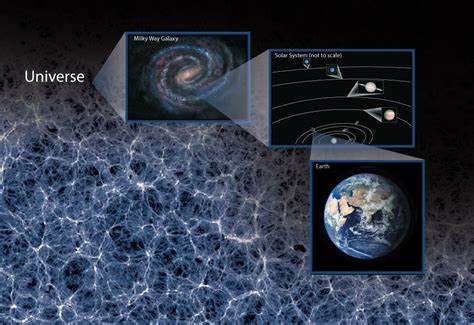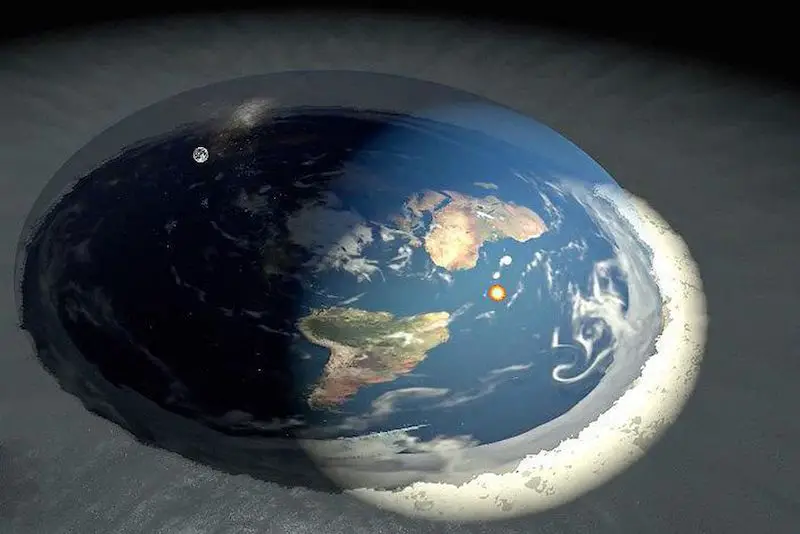Our perception of reality is significantly constrained by our evolutionary heritage. Having evolved on the African plains millions of years ago, our senses are tailored to survival in that environment—eyes capable of spotting distant predators and ears attuned to the slightest rustle in the grass. This sensory apparatus, while effective for survival, reveals only a minuscule fraction of the world and fosters a common-sense understanding that often deceives us. Here are seven misconceptions about reality that illustrate how our intuition can lead us astray.
1. Earth is Flat
Throughout history, many ancient civilizations believed the Earth was flat, appearing as a disk. This notion seems intuitive since the Earth appears flat to the naked eye. However, numerous clues reveal its true spherical nature. For instance, ships recede below the horizon as they move away, and during a lunar eclipse, Earth’s shadow on the Moon is curved.
Ferdinand Magellan’s circumnavigation of the globe provided concrete evidence of Earth’s roundness. The most undeniable proof came from space, with photographs taken by the Apollo 8 astronauts clearly showing Earth as a sphere. Additionally, Eratosthenes, a Greek mathematician, estimated Earth’s circumference around 240 BC by measuring the angles of shadows in different cities, arriving remarkably close to modern measurements.
2. The Stars Turn Around Earth
It seems obvious that stars move around a stationary Earth because that’s what it looks like. However, the concept of a stationary Earth was challenged by Galileo Galilei in the 17th century. He demonstrated that just as a ball thrown on a moving ship behaves the same as one thrown on land, the same principles apply to Earth’s rotation.
The Coriolis effect, where projectiles deflect to the right in the northern hemisphere and to the left in the southern hemisphere, provided further evidence. The Foucault pendulum experiment, conducted by Léon Foucault in 1851, visually demonstrated Earth’s rotation. Ultimately, the view of Earth rotating in space from orbiting satellites provided definitive proof.
3. Creatures are Designed for Their Habitats

It appears that animals and plants are perfectly designed for their environments. For example, sharks are adept ocean predators, and pine trees thrive in snowy conditions. However, this apparent design is the result of natural selection. As biologist Richard Dawkins explains, DNA mutations produce a variety of organisms, most of which do not survive. Those that are well-suited to their environments pass on their genes.
This process of natural selection gives the illusion of design, but it’s simply the survival of the fittest. This concept can be likened to a machine producing random keys, with only a few fitting a particular lock. Despite the compelling illusion of design, it’s crucial to understand that it is merely an outcome of evolutionary processes.
4. Your Time is the Same as Someone Else’s Time

Our daily experiences suggest that time flows uniformly for everyone. We can synchronize clocks and see that they tick at the same rate. However, this uniformity holds true only in our slow-moving, weak-gravity environment. Albert Einstein’s theory of relativity revealed that time can warp under high speeds or strong gravitational fields.
For instance, the speed of light remains constant for all observers, meaning that at high velocities, rulers shrink and clocks slow down. Moreover, in strong gravitational fields, like near a black hole, time significantly slows down. Thus, while our everyday experience suggests a consistent passage of time, the reality is far more complex.
5. The Moon is Not Falling

Intuitively, it seems the Moon is fixed in its orbit. However, Isaac Newton’s insights revealed that the Moon is indeed falling towards Earth. He envisioned a cannonball fired horizontally that would eventually fall to the ground. If fired at a sufficiently high speed, it would fall in a curve matching Earth’s curvature, resulting in a perpetual orbit.
This concept also applies to astronauts experiencing ‘zero-g’ in the International Space Station. They are not beyond gravity but are in continuous free fall, just like the Moon.
6. The Stars are Pinpricks in the Celestial Sphere

Stars appear as tiny points of light in the sky, leading to the ancient belief that they were fixed points on a celestial sphere. However, they are actually distant suns. This was confirmed by observing stellar parallax, where nearby stars shift positions when viewed from opposite sides of Earth’s orbit, a phenomenon first measured in 1838 by Friedrich Bessel.
Further confirmation came from studying the light of stars. Each element emits light at specific wavelengths, creating a spectral fingerprint. The spectra of stars show these fingerprints, revealing their composition and affirming that they are suns much like our own.
7. We Can Know What the Universe is ‘Now’

It seems reasonable to think we can know what the Universe is like at the present moment. However, because light travels at a finite speed, we see distant objects as they were in the past. For example, the Moon is seen as it was 1.25 seconds ago, while the Andromeda galaxy appears as it was 2.5 million years ago.
This time delay means we observe the Universe’s history rather than its current state. Thus, while we can’t see the Universe as it is now, we can piece together its history from the light reaching us.






Leave a comment